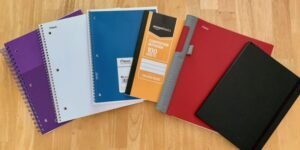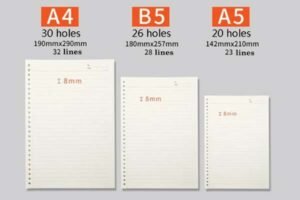
Is your favorite notebook falling apart? It's frustrating when pages tear or the binding gives way. But don't worry, many common notebook problems are surprisingly easy to fix yourself.
To fix a broken notebook, first, identify the specific damage—like torn pages, a loose spine, or a damaged cover. Then, gather simple tools such as acid-free tape1, appropriate glue, or replacement parts, and carefully apply the specific repair technique needed for the issue.
Before you toss that beloved notebook, let's explore some common issues and how you can breathe new life into it. Assessing the damage is the first step. Is it a simple tear, or is the entire binding compromised? Different problems require different solutions, and I'll walk you through some of the most frequent ones I've seen. Understanding the type of damage helps you choose the right method and materials for a lasting repair.
For example, loose or torn pages can often be mended with specialized tape. If the cover is bent or detaching, a good quality adhesive might be all you need. Binding issues can be more complex, but even then, some fixes are within reach, especially for certain types of notebooks like ring binders, which are a specialty of ours at NotebookRing®.
What's the Best Way to Repair Torn Notebook Pages?
A ripped page can be annoying, interrupting your flow and making your notes look messy. But there's a simple fix!
The best way to repair torn notebook pages is to use clear, acid-free archival tape applied carefully to both sides of the tear. For small tears near the binding, a thin line of pH-neutral PVA glue can also be effective if pressed well while drying.
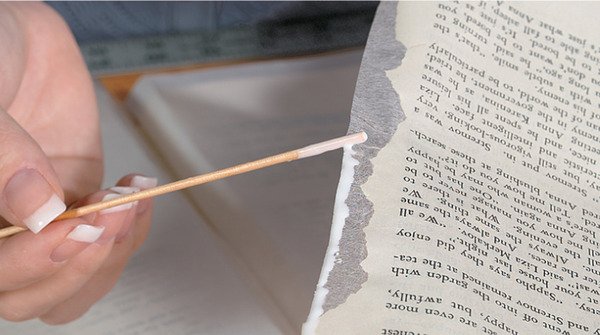
Let's dive deeper into why these methods work and explore some alternatives.
Why Acid-Free Tape is Key
When you're repairing paper, especially in a notebook you want to keep for a while, the "acid-free" part is crucial. Standard tapes (like regular transparent office tape) contain acids that can yellow and degrade paper over time. They can also become brittle and lose their adhesion.
- Archival tape: This is specifically designed for paper repair. It's pH-neutral, won't yellow, and remains flexible.
- Application: Place the torn edges together as perfectly as possible. Apply a piece of tape along the tear on one side, then flip the page and apply tape to the other side for a strong, lasting repair.
Alternative Repair Materials
Sometimes, depending on the paper or the nature of the tear, you might consider other options:
| Material | Best Use Scenario | Pros | Cons |
|---|---|---|---|
| Japanese Tissue | Very delicate paper, fine art, archival documents | Extremely thin, strong, nearly invisible | Requires specialized adhesive, more skill |
| pH-Neutral PVA Glue | Small edge tears, reinforcing near the spine | Strong bond, dries clear, flexible | Can cause puckering if too much is used |
| Page Reinforcements | Torn binder holes | Quick, easy, strengthens hole | Only for punched holes, can add bulk |
Reinforcing Punched Holes
If the holes for your binder rings have torn, don't despair.
- You can use hole reinforcement stickers2, which are small, adhesive circles that stick around the hole.
- Alternatively, apply a small piece of archival tape over the torn hole area on both sides of the page.
- Once the tape is secure, carefully re-punch the hole through the tape. This creates a much stronger, tear-resistant hole.
Can I Fix a Broken Notebook Spine or Binding?
A broken spine often seems like the end for a notebook. But depending on the type of binding, a repair might be possible.
Yes, you can often fix a broken notebook spine. For glue-bound notebooks, reapply strong, flexible bookbinding glue3. For spiral or wire-o bindings, you might need to carefully re-thread pages or replace the coil. Ring binder mechanisms can often be repaired or replaced entirely.
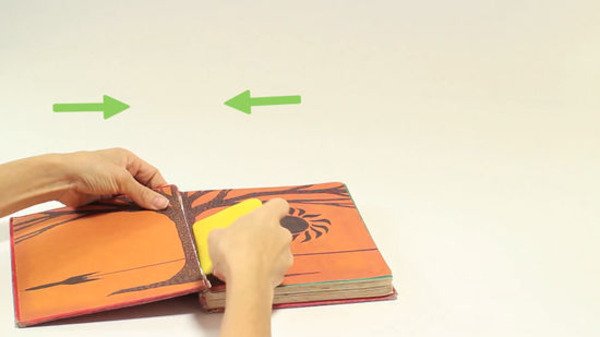
The binding is the backbone of your notebook, and its repair depends heavily on its construction.
Understanding Binding Types and Fixes
| Binding Type | Common Issue | Fixability | Key Steps / Tools Needed |
|---|---|---|---|
| Perfect Bound (Glue) | Spine cracking, pages loose | Moderate | Bookbinding glue (flexible PVA), clamps, allow to dry fully |
| Sewn Binding | Sections coming loose | Difficult (often needs professional help) | May involve re-sewing sections, then re-gluing spine |
| Spiral / Wire-O | Coil bent, pages out | Moderate to Difficult | Pliers to reshape, or replacement coil & re-threading |
| Ring Binder | Rings misaligned/broken | Easy to Moderate (mechanism often replaceable) | Pliers for alignment, or Phillips screwdriver for replacement |
Fixing a Perfect Bound (Glued) Spine
If pages are falling out of a paperback-style notebook, you can often re-glue them.
- Carefully remove any loose pages and old, brittle glue from the spine edge of the pages and the inside of the cover.
- Apply a thin, even coat of flexible bookbinding glue (PVA is good) to the spine edge of the page block.
- Press the page block firmly back into the cover.
- Clamp the notebook shut (using binder clips and pieces of card to protect the cover) and let it dry for at least 24 hours. We use German Heidelberg glue binders in our factory for a reason – a strong, flexible glue bond is essential!
Dealing with Spiral or Wire-O Bindings
These can be tricky. If a few loops of a spiral are bent, you might gently reshape them with needle-nose pliers. If the coil is severely damaged or pages have come completely loose, replacement is often better. Re-threading pages onto a new coil can be done, but it requires patience.
Ring Binder Mechanisms
As a manufacturer of binders, NotebookRing® knows these well! If rings are just slightly misaligned, you might gently bend them back. If the mechanism itself is broken, these are often riveted or screwed into the binder cover.
- If screwed in, you can usually find replacement mechanisms (ensure the hole spacing matches – common standards include Filofax or Campus 20/26-hole systems) and swap them out.
- Our metal parts use 304 stainless steel or rust-proof electroplated processes, designed for durability.
How Can I Protect or Repair My Notebook Cover?
The cover is your notebook's first line of defense. Keeping it intact preserves your notes and the notebook's usability.
To protect your notebook cover, handle it with care, consider a protective sleeve, or use materials resistant to wear. For repairs, minor scuffs can be disguised, while tears or detachment can often be fixed with strong bookbinding glue and proper pressing.
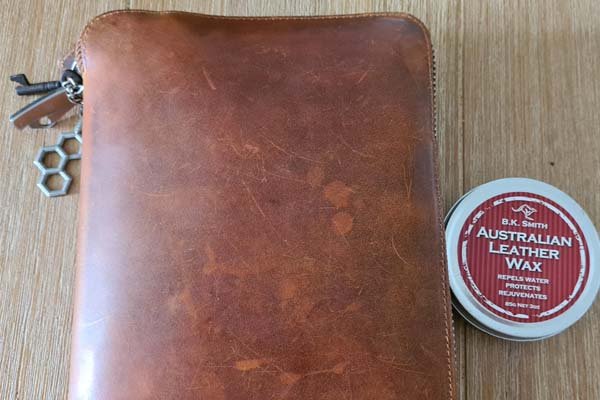
Protecting your cover from the start is always the best strategy.
Proactive Cover Protection
- Handle with care: Avoid bending, dropping, or exposing it to liquids.
- Notebook sleeves: A simple fabric or plastic sleeve can prevent most scuffs and dings.
- Material choice: When buying a new notebook, consider cover materials. At NotebookRing®, we offer options like durable PP plastic covers or sturdy hardcover cloth options.
Repairing Common Cover Damage
- Scuffs and Light Scratches: For leather or faux leather, a bit of shoe polish or specialized leather balm can work wonders. For paper or card covers, sometimes a carefully matched felt-tip marker can make scratches less noticeable.
- Bent Corners: Try to gently bend them back. For a more permanent fix on card covers, you can apply a tiny amount of glue inside the bent layers and press flat under a heavy book until dry. Metal book corners can also be added.
- Tears or Detachment: If the cover is tearing away from the first page or the spine, bookbinding glue is your friend. Apply a thin layer, press firmly, and allow it to dry completely, often clamped or under weight. For example, a cloth hardcover might detach from the text block; this usually requires re-gluing the endsheets.
- Water Damage: Act quickly! Blot (don't rub) away excess water with absorbent cloths or paper towels. Let the notebook air dry, slightly open, in a well-ventilated area. Placing paper towels between affected pages can help. It may warp, but drying it under a gentle weight once damp (not soaked) can minimize this.
My Binder Rings Are Misaligned or Broken – What Can I Do?
Few things are more annoying than binder rings that don't close properly, causing pages to snag or fall out!
For misaligned binder rings, try gently coaxing them back into alignment with your fingers or padded pliers. If a ring is snapped or the mechanism is faulty, you will likely need to replace the entire ring mechanism, especially if it's riveted to the cover.

This is a common issue, especially with binders that see a lot of use.
Assessing the Ring Problem
First, look closely at the rings.
- Slight Misalignment Gaps: Do the ring halves meet, but there's a slight gap, or one is slightly higher than the other? This is often fixable.
- Bent Rings: Is one part of a ring clearly bent out of shape?
- Broken Rivets/Springs: Does the trigger mechanism feel loose, or are rings floppy? This indicates a more serious problem with the mechanism itself.
Attempting Realignment
- Gentle Pressure: Sometimes, simply opening and closing the rings firmly a few times can help them reseat. You can also try gently pushing the misaligned parts back into place with your fingers.
- Pliers (with caution): If finger pressure isn't enough, you can use needle-nose pliers. Always wrap the tips of the pliers in cloth or tape to avoid scratching or further damaging the metal rings. Apply very gentle, controlled pressure to nudge the ring parts back into alignment. Work slowly and check frequently.
When to Replace the Mechanism
If a ring is snapped, the spring mechanism is broken, or the rivets holding the mechanism to the binder cover are loose or broken, a simple bend-back repair won't work.
- Standard Hole Spacing: Many binder mechanisms are attached with screws or rivets in standard positions. If your binder uses screws, you can often unscrew the old mechanism and install a new one. Measure the distance between the attachment points and the ring spacing to find a compatible replacement. We ensure our binders are compatible with international standards like 6-hole (Filofax) or 20/26-hole (Campus) systems.
- Riveted Mechanisms: These are harder to replace at home as they require specialized tools to remove old rivets and set new ones. In this case, if the cover itself is still in good condition, you might consider taking it to a specialty repair shop, or it might be time for a new binder. Our NotebookRing® binders use robust 304 stainless steel rings to minimize these issues.
Is It Always Worth Fixing an Old Notebook?
While fixing notebooks can be satisfying, sometimes it's more practical to start fresh. How do you decide?
It's not always worth fixing an old notebook. Consider the sentimental value, the cost and effort of repair versus buying new, and the overall structural integrity. If repairs are too extensive or costly, or the paper itself is degraded, a new notebook is often a better choice.
This is a personal decision, but here are some factors to help you weigh your options.
Factors to Consider
- Sentimental Value: Does the notebook hold precious memories, irreplaceable notes, or sketches? If so, the effort to repair it, even if extensive, might be well worth it. These are the notebooks you’ll treasure.
- Cost of Repair vs. Replacement:
- Materials: Archival tape, specialized glue, or replacement binder mechanisms have a cost.
- Time: Your time is valuable. How long will the repair take?
- New Notebook Cost: Compare these to the price of a new, good-quality notebook. As a manufacturer, we know that regular notebooks can cost between $0.63 and $1.70 USD depending on quantity and features. For instance, our regular notebooks are priced very competitively, especially for bulk orders.
- Structural Integrity:
- Paper Quality: Is the paper itself yellowed, brittle, or badly damaged by water or mold? Repairing the binding won't save compromised paper.
- Extent of Damage: Is it just one torn page, or is the entire notebook falling apart? Multiple, complex repairs might not be feasible or result in a durable fix.
- Purpose of the Notebook: Is it for daily, rough use, or is it an archive of important information? A heavily used notebook might be better replaced with something sturdy and new, perhaps with options like our tear-proof reinforcement binding for educational use.
- Environmental Impact: Repairing is generally eco-friendly as it extends an item's life. However, if you choose to replace, consider sustainable options. We at NotebookRing® are FSC™ certified (C106904), offer recycled paper options at no surcharge, and even have bagasse fiber covers and soy ink printing. For every 100 books sold, we donate a sapling!
Ultimately, if the notebook is easily replaceable and holds no strong sentimental value, and the repair is complex or costly, getting a new one is often the sensible path.
Looking for a New, Durable, or Customized Notebook?
While fixing your cherished notebooks is a great skill, sometimes a fresh start with a high-quality, reliable notebook is what you need. Or perhaps you're looking to create something unique for your business, school, or brand.
At NotebookRing®, we've been focused on ingenious writing tools since 2006. As professional notebook and binder manufacturers, we understand what makes a notebook last and what features truly matter.
- Customization is our strength: From cover processes like hot stamping, laser engraving, and embossing to inner page selection (80-120g acid-free paper, recycled paper, Tomoe River paper) and various binding methods (sewing glue binding, metal coil, binder systems compatible with Filofax and Campus standards), we can create exactly what you need.
- Quality Materials: We use 304 stainless steel for binder rings, offer environmentally friendly options like bagasse fiber covers and soy ink, and adhere to ISO 9001, FSC™, and BSCI standards.
- Solutions for Everyone: Whether it's bulk customized notebooks for educational institutions, elegant corporate gift sets, or uniquely shaped notebooks for creative industries, we have the capability. Our benchmark cases with German bookstores and Silicon Valley tech companies speak to our quality and flexibility.
- Flexible and Green: We support sample orders from 100 books and are committed to sustainability, right down to calculating our carbon footprint with the Carbon Trust.
If you're looking for a partner for your next notebook project, whether it's 100 pieces or 500,000, we'd love to help. You can reach out to Timothy Wei at info@notebookring.com or visit www.notebookring.com. We even offer free physical sample books!
Conclusion: Give Your Notebooks a Second Chance
Fixing a broken notebook can be a rewarding process, extending its life and preserving your thoughts. For many common issues, simple repairs are effective. And if it's time for a new one, consider quality and customization for your next perfect notebook.
-
Understanding acid-free tape is crucial for preserving your notebooks. This resource explains its benefits and applications in detail. ↩
-
Discover how hole reinforcement stickers can save your notebook from further damage and ensure your pages stay intact. ↩
-
Learn about bookbinding glue, its types, and how to effectively use it for notebook repairs to ensure durability and longevity. ↩

